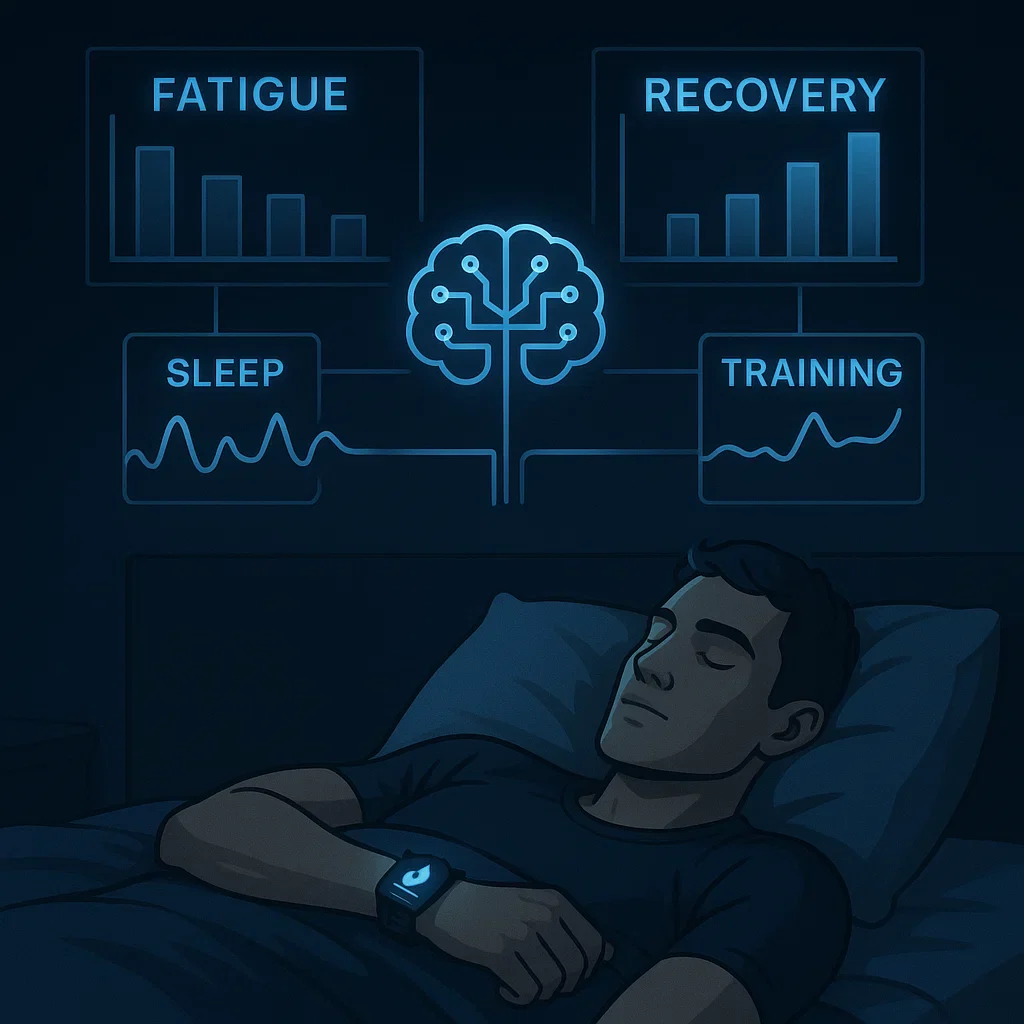Fatigue Prediction with Machine Learning: HRV & Sleep Data Models Explained
Fatigue can make or break your running journey—causing injury, burnout, or breakthrough. In 2025, machine learning (ML) and artificial intelligence (AI) have revolutionized how runners, coaches, and apps predict “hidden” fatigue by analyzing heart rate variability (HRV), sleep, and more.
This article explains how fatigue prediction works, the best real-world tools, and what science actually supports—so you can run smarter, recover faster, and avoid surprise setbacks.
🧠 How Does Fatigue Prediction with Machine Learning Work?
- Data Inputs: Heart Rate Variability (HRV), sleep duration/quality, training load, resting heart rate, sometimes subjective “readiness” scores.
- Machine Learning Workflow: Your wearable/app collects daily metrics → The ML model learns your personal patterns (e.g., low HRV after hard runs) → Predicts fatigue risk and recovery needs day by day.
- Outputs: Recovery scores, traffic-light warnings, personalized training adjustments (reduce intensity, add rest, etc.)
- Bonus: The more you sync data, the “smarter” the predictions—AI adapts as you progress, get sick, or sleep changes.
📲 Latest Models & Real-World Apps (2025 Update)
- Whoop: Uses HRV, sleep, and strain data to provide daily “recovery” and “strain” scores; ML detects subtle fatigue trends.
- Athletica.ai & TrainAsONE: Integrate wearable HRV and sleep data; adjust running plans automatically for predicted fatigue.
- Garmin (2025): Newer watches offer fatigue prediction via HRV, sleep, and “body battery”—helpful for pacing and rest.
- Research Models: Machine learning papers show that combining sleep+HRV predicts injury risk and overtraining better than classic “training log only” models.
⚖️ Benefits & Limitations of ML Fatigue Prediction
✅ Main Benefits
- Early detection of “hidden” fatigue before injury or burnout hits
- Objective recovery recommendations—especially after poor sleep or tough workouts
- Reduces risk of overtraining in ambitious or novice runners
- Helps coaches fine-tune group training and rest days
- Improves confidence for “type A” athletes who might otherwise ignore warning signs
⚠️ Limitations & Cautions
- Accuracy can vary with sensor quality, syncing habits, and data “noise” (e.g., illness, stress, travel)
- AI models don’t fully understand emotional fatigue or life context
- Some runners may become over-reliant on “traffic light” scores instead of tuning in to their bodies
- Long-term benefits (over years) are still unproven
🏃♀️ Sample Use Cases – Runners & Coaches
❓ FAQ: HRV, Fatigue & Machine Learning
📊 What is HRV and why does it matter for fatigue?
🤖 Can I trust ML fatigue predictions?
😴 How important is sleep data for fatigue prediction?
⚠️ Should I always follow AI “rest” recommendations?
📚 Further Reading & Resources
🏁 Final Thoughts: Run Smart, Rest Smarter
Fatigue prediction with AI and ML isn’t just about numbers—it’s about getting to know your body, training more consistently, and avoiding setbacks. Use these tools as a guide, stay engaged, and don’t be afraid to tweak your plan based on both tech and intuition.
Tried ML fatigue prediction or have a story to share? Join the discussion below—real-world feedback makes us all stronger runners!
Have you ever caught “hidden” fatigue thanks to AI or HRV feedback? Share your wins, questions, or frustrations below—your real-world feedback helps make running smarter for everyone.

About the Author
Lost Pace is an ultramarathon runner, shoe-tester and the founder of umit.net. Based year-round in Türkiye’s rugged Kaçkar Mountains, he has logged 10,000 + km of technical trail running and completed multiple 50 K–100 K ultras.
Blending mountain grit with data, Lost analyses power (CP 300 W), HRV and nutrition to craft evidence-backed training plans. He has co-written 260 + long-form guides on footwear science, recovery and endurance nutrition, and is a regular beta-tester of AI-driven coaching tools.
When he isn’t chasing PRs or testing midsoles, you’ll find him sharing peer-reviewed research in plain English to help runners train smarter, stay healthier and finish stronger.
Ultrarunner · Data geek · Vegan athlete

